As well as holiday letting, it is possible to stay at Ardagh and have meals etc. provided in return for work undertaken on the smallholding through WWOOFers (World Wide Opportunities On Organic Farms). Below you can see some of the work required to make cheese. |
This is where it all starts! The stalls need to be mucked out, and the goats fed watered and given new bedding. Those who are milked are done so twice a day, and any stock proofing needed is undertaken. At regular intervals their hooves need trimming. They are also in need of a bit of human company too! Aside from these duties, there are kiddings, illnesses to deal with and a plethora of surprises to contend with. All in all there is very little chance of experiencing any boredom! To view this image full size click here. |
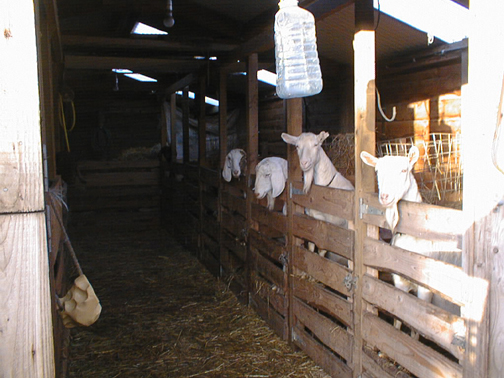 |
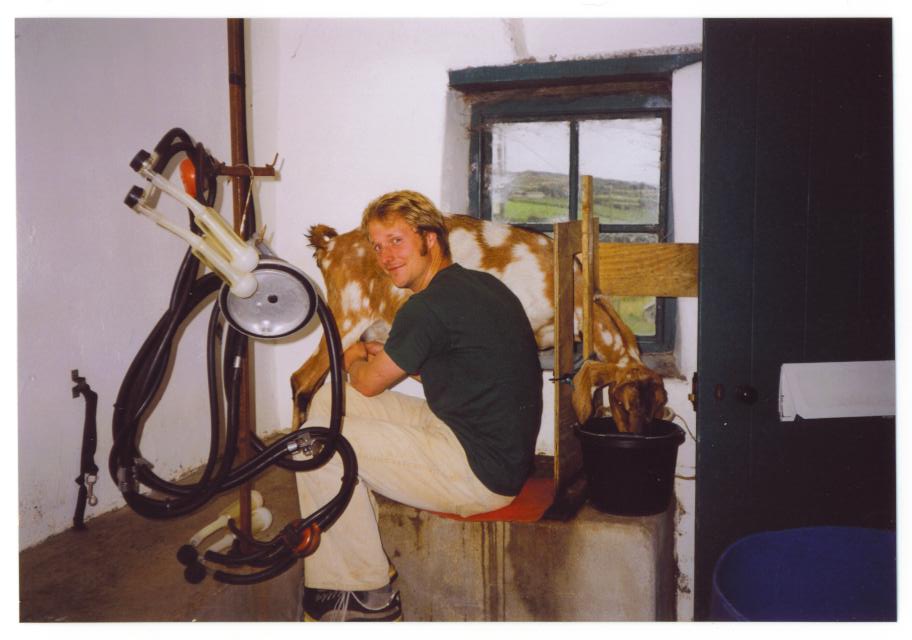 |
This is the milking parlour. The gentleman you can see is one of the Wwoofers who came to stay. To view this image full size click here. |
This is the next port of call. Once the goats have been milked, the milk enters the bulk tank where it is cooled and stored. Then all the equipment needs to be cleaned thoroughly. The goats are let out to graze and cheese-making process can begin. To view this image full size click here. |
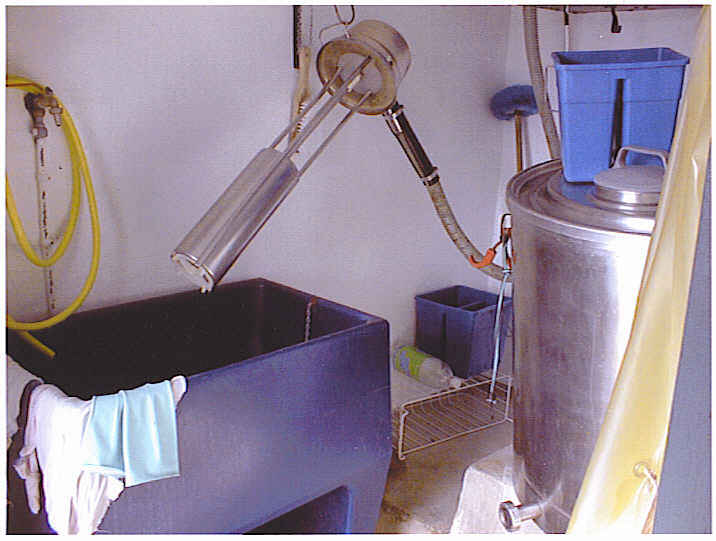 |
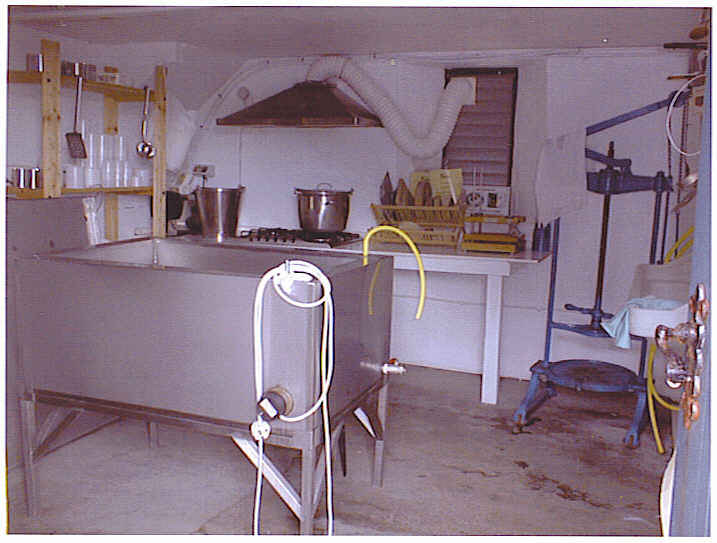 |
Now the milk is taken to the cheese-making room where it is warmed and a starter culture is added. Then a rennet (non G.M.) is also added. Once the required temperature is reached the curds and whey separate and the curds are cut. The curds are then put into moulds and pressed. All of the equipment has to be scrupulously clean to avoid contamination, rendering all of the prior work involved in yielding the milk a waste of time and energy. To view this image full size click here. To see a close-up of the curds and whey click here. |
Here is another Wwoofer who came to stay at Ardagh. She is placing the drained curds onto the cheese press. To view full size click here. |
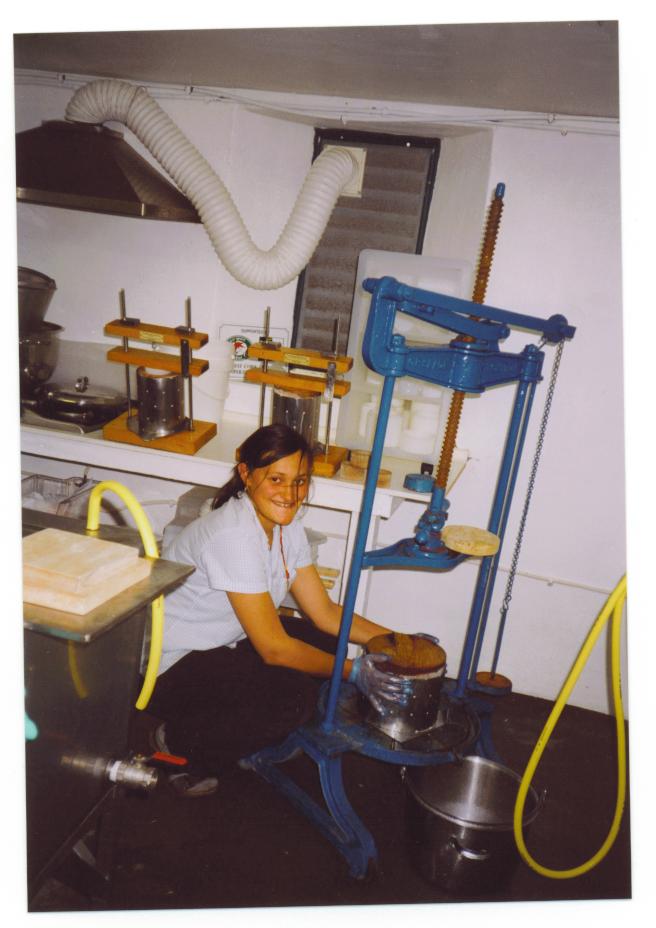 |
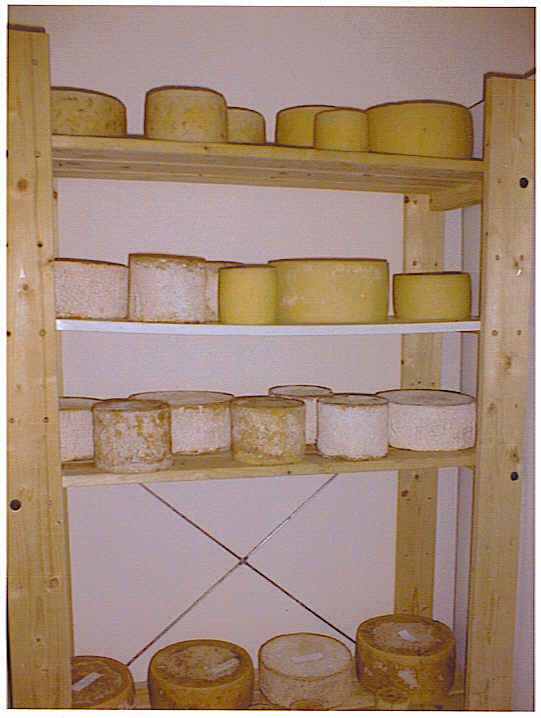 |
Here is the end result. After all of the mucking out, bedding up, feeding, watering, fencing, general husbandry, milking, cheese-making and cleaning, the cheese needs to mature. There are still potential problems though. Cheese can crack, become infested with cheese mites, or just not turn out right in spite of doing everything correctly. Different moulds can form on the outside of the cheese and ruin all the endeavours prior to maturation. However, when a few months later a perfect cheese is cut and shared with friends, or sold at market, it is then one can truly say that it is all worth while! To view this image full size click here. |
THIS WEB SITE WAS DESIGNED BY www.getonlinecheap.co.uk |
Copyright © 2005 ardaghcastle.com |
This site was last updated September 2005 |